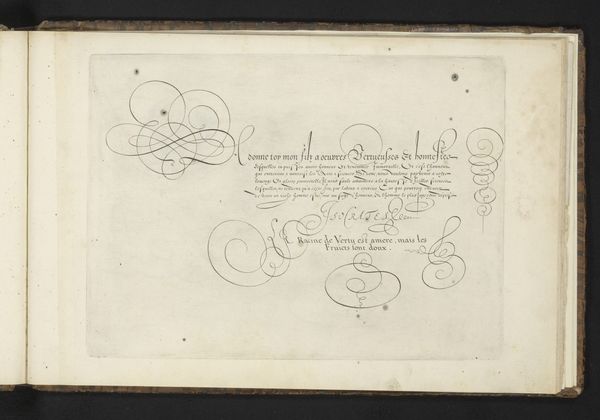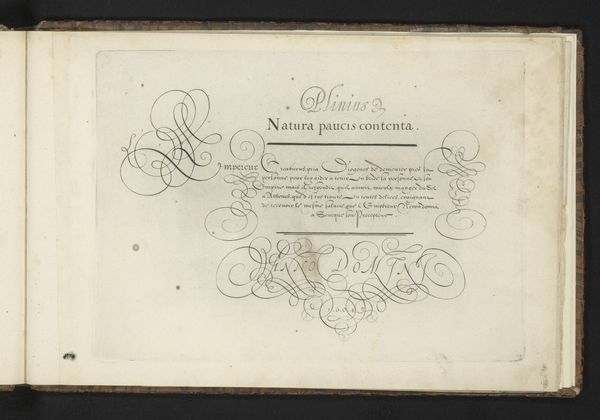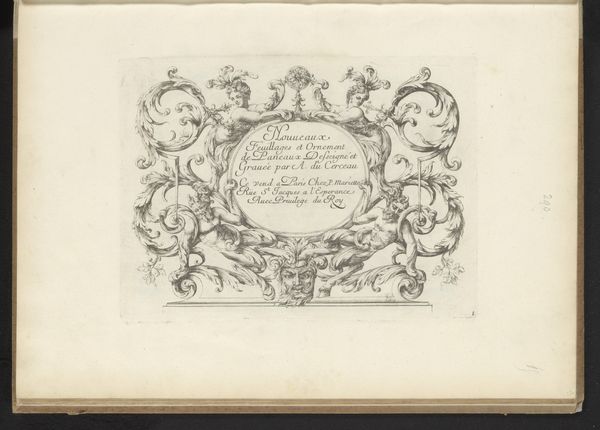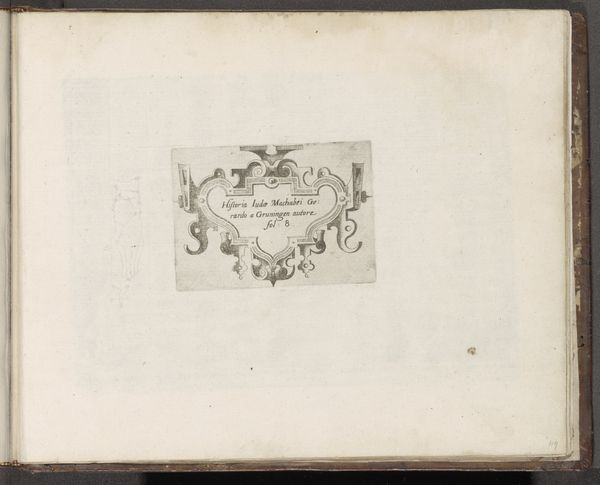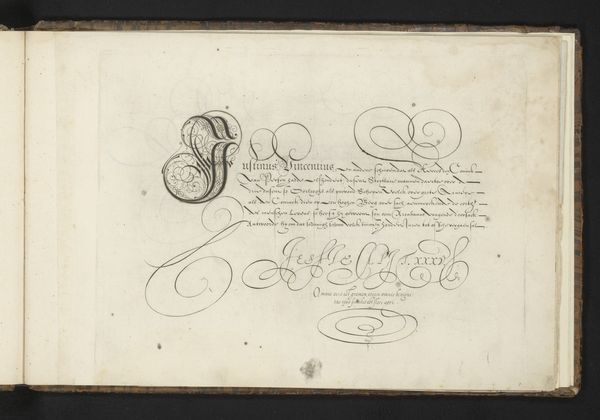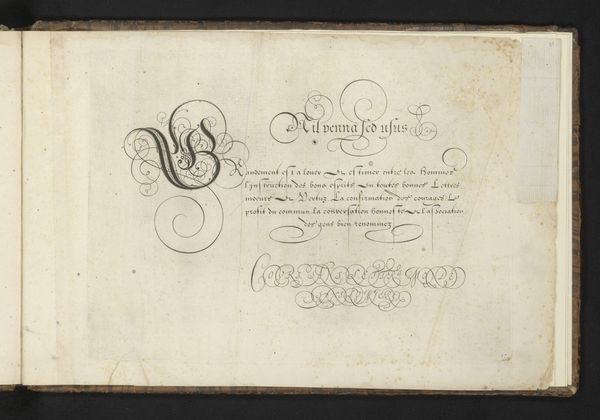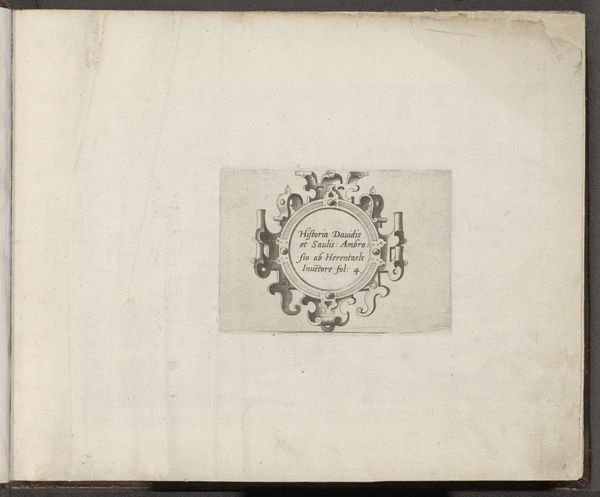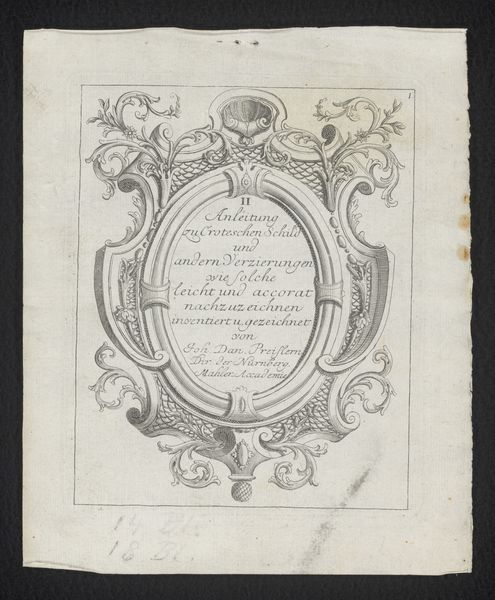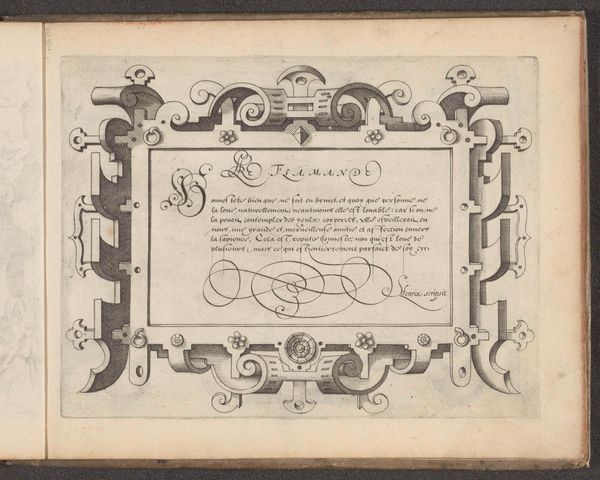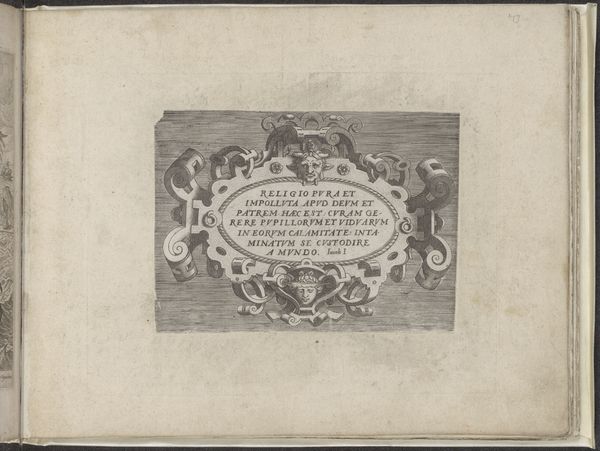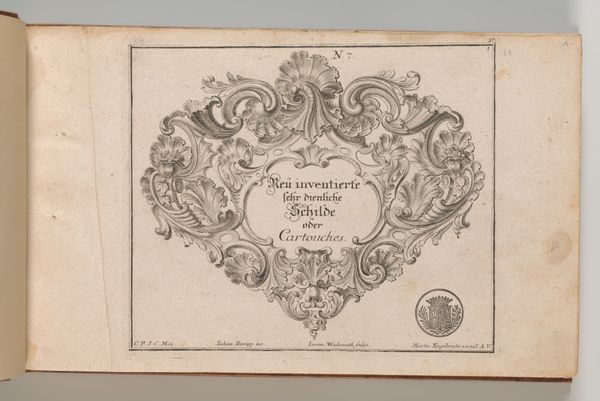
#
aged paper
#
toned paper
#
homemade paper
#
ink paper printed
#
sketch book
#
hand drawn type
#
personal sketchbook
#
hand-drawn typeface
#
thick font
#
sketchbook art
#
calligraphy
Dimensions: height 199 mm, width 267 mm, height 227 mm, width 345 mm
Copyright: Rijks Museum: Open Domain
Curator: This page, "Schrijfvoorbeeld: Adrian Empereur des Romains(...)," is from a sketchbook by Cornelis Dircksz. Boissens, dating back to 1605. The ink on paper shows an example of script. It strikes me as very formal, with those elaborate swirls and carefully drawn letters. What is your initial impression, and how do you interpret this work? Editor: It’s fascinating to see how handwriting was considered an art form in itself. The text looks like calligraphy but also practice. Is it simply a writing sample, or is there something more to it? Curator: I think situating this piece within its historical context is key. The 17th century witnessed intense debates about social hierarchies, access to knowledge, and who held power. Handwriting, as a skill, was tied to social class and education. Notice how the flourished letters evoke a sense of authority, almost imperial. Editor: So, the elegant script wasn’t just about aesthetics; it also communicated power dynamics? Curator: Precisely. The choice of “Adrian Empereur des Romains” also hints at a fascination with classical antiquity, which, during the Renaissance and early modern period, was used to legitimize certain forms of governance and social structures. Look at the way the script commands the page, and then think about what it might have meant to be literate, to control the written word at that time. Who had access? Who was excluded? Editor: I see what you mean. It’s like the artist is not only showcasing a skill but also subtly reinforcing or questioning those established power structures. It prompts the question of how writing can both liberate and control. Curator: Exactly! By looking beyond the surface beauty, we can unravel the complex layers of social and political meaning embedded within this seemingly simple writing sample. This little practice piece becomes a window into a world grappling with its own hierarchies. Editor: That’s such a valuable perspective. It changes how I see the piece entirely, from a mere writing sample to a commentary on society and power. Curator: And that's what makes art history so rewarding—always challenging our assumptions and encouraging critical engagement with the past!
Comments
No comments
Be the first to comment and join the conversation on the ultimate creative platform.
